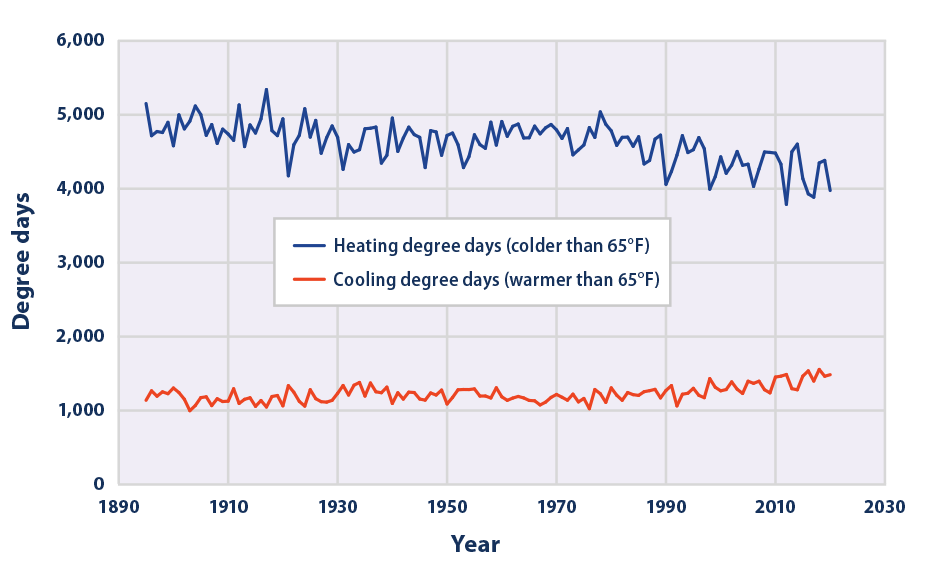If you’re like most people, you probably don’t know what cooling degree days are. But Ohio has some hot summers, and knowing what cooling degree days are can significantly impact your life!
Cooling degree days measure how much heat there is in the air temperature. The higher the number, the more heat there is. And that causes you to use more electricity than you usually would.
Our part of Ohio saw 364 cooling-degree days in July 2025. That's a big difference from the average of 266 cooling-degree days we usually see in July. Ohio's Monthly Climate Summary has more information on this.
Degree Days?
A cooling degree day (CDD) measures how hot it is over a period of time relative to a base temperature. The base temperature is usually set at 65°F. So, if the average temperature for a day is 80°F, that day would have 15 CDD.
How Cooling Degree Days Work
Cooling degree days measure how much (in degrees) and for how long (in days) the average temperature is above a certain threshold. CDD is used to estimate energy demand for air conditioning. The more CDD, the more energy is needed to cool a building.
The more cooling degree days there are in an area, the greater the demand for air conditioning. This means that cooling degree days can be used to predict how much energy will be needed to keep buildings cool.

So why is this important?
By understanding cooling degree days, we can better prepare for hot weather and ensure we have enough energy to keep everyone comfortable.
Drawbacks of Cooling Degree Days
As the weather gets warmer, air conditioners are turned on more frequently to combat the rising temperatures. However, there is such a thing as too much of a good thing—and when it comes to air conditioning, that can mean using up too much energy and racking up a hefty bill.
One way to determine how much energy your air conditioner uses is by looking at the cooling degree days. This measure of how much heat is in the air is calculated by taking the average daily temperature and subtracting 65 degrees from it. If the resulting number is positive, there were cooling degree days that day.
The problem with using cooling degree days to measure air conditioner usage is that it doesn’t consider how much the air conditioner is used. For example, if it’s a particularly hot day, the air conditioner may run all day to keep the temperature inside the home comfortable. However, if it’s only used for a few hours on a milder day, the cooling degree days will be the same even though the air conditioner wasn’t used as much.
In addition, cooling degree days don’t consider the air conditioner's efficiency. A newer, more energy-efficient model may use less energy to cool the same space as an older model. However, the cooling degree days would be the same in both cases.
The bottom line is that cooling degree days are a valuable tool for determining how much your air conditioner is running. However, they don’t give the whole picture regarding energy usage.
Frequently Asked Questions
What are heating degree days and cooling degree days?
Cooling degree days measure how hot it is over a period of time. The higher the number, the more cooling is required.
What are cooling degree days used for?
Cooling degree days can be used to calculate the amount of energy required to cool a space.
What does degree day mean?
A degree day is a unit of measurement that represents how much heat is required to raise the temperature of one pound of water by one degree Fahrenheit. Cooling degree days estimate how much energy is needed to cool space, while heating degree days measure how much heat is required to make a building comfortable.
Conclusion
Cooling degree days are an important factor to consider. By understanding what cooling degree days are and how they can affect you, you can ensure that you’re prepared for all the hot summer days!

